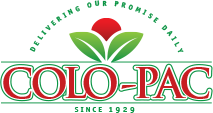
Round tomatoes are the most popular and iconic of the tomato classes. Round tomatoes are categorized by size, quality, level of maturity, genetic type, whether they are grown indoors or not, and whether they are produced conventionally or organically. Round tomatoes are graded by size from medium, large, extra-large to jumbo. Small round tomatoes are generally not marketed in the U.S. for interstate commerce but may be available during local growing seasons. Quality grades for tomatoes are called number one, number two, or combination, based on the percentage of blemishes, scarring and decay on the tomatoes in the box. Commercially popular categories include mature green, vine-ripe, heirloom, greenhouse or shade-house grown. Greenhouse, shade-house and other growing methods can also be characterized as controlled environments. All of these can be grown organically or conventionally. Mature green round tomatoes are harvested when they are mature, yet still green. They are then ripened using ethylene gas—a natural compound produced by fruit bearing plants that promotes ripening. The result of the gas ripening process is a hardy tomato that is popular in the food service industry because it is very easy to slice, thanks to its firm flesh. Vine-ripe rounds are, as suggested by their name, allowed to fully ripen while still on the vine. They are typically sweeter and softer than gas-ripened tomatoes. A recently popular item is the tomato on the vine, or TOV, which are tomatoes in clusters still attached to their vines. Because tomatoes tend to vary a great deal in terms of size and quality, they are almost always resorted and packaged before being sold. Rounds are available in several types of packages, most of which are named for the number and size of the tomatoes in the box, for example a 5×5 two-layer box of tomatoes contains fifty uniform large tomatoes, organized in two layers of 25 tomatoes. They are also sold in twenty five pound bulk boxes that are sorted for quality and size, but the size of tomatoes in bulk boxes may not be as consistent as they are in the sorted layer boxes.
The tomato is regarded as a quintessential part of Mediterranean and Middle Eastern cooking. It is also commonly used in Indian, Southeast Asian and Japanese cuisines, and the fruit is widely popular throughout North and South America. In the early in the 1700s, Europeans mostly cooked tomatoes in oil and seasoned with salt and pepper, but much more exciting recipes have developed for the fruit since then. Round tomatoes are generally used raw and either sliced or diced. Diced round tomatoes are commonplace in tossed salads, and slices of round tomatoes often top sandwiches and burgers. Caprese salad (pronounced cah-pray-zay) is a simple Italian appetizer made with fresh basil, olive oil, mozzarella, salt, and tomato slices. Like bell peppers, tomatoes can be hollowed out, stuffed and roasted. Stuffed tomatoes are typically made with cheese, along with rice or grains like quinoa. Indian cooking often calls for tomatoes as well. Many curry recipes are tomato based. While Romas are typically a better candidate for these sauces, rounds can be a fine substitute. Much like tomato based pasta sauces, curry sauces can be made by cooking tomatoes, and pureeing them into a creamy, smooth sauce. The sauce is typically flavored with onions, spicy peppers and blends of curry spice such as coriander, turmeric, cumin, cloves, and cardamom. Lean meat, vegetables, or the soft Indian cheese, paneer, are commonly prepared in this sauce, and it is often served on a bed of basmati rice along with naan, an Indian flatbread. Diced or sliced rounds can be added to nearly any dish, hot or cold, to add a pop of color, and subtle zip of flavor. To put it simply, the possibilities are nearly endless for what can be done with round tomatoes.
Picking a fresh tomato is key to preparing a good dish. When using round tomatoes raw, quality is doubly important. A ripe, fresh round tomato can be various colors but should be firm to the touch. A fully ripe tomato will last about five days at room temperature, and marginally longer in the refrigerator. But refrigeration will reduce the tomatoes flavor. Once a tomato is cut, however, it should be refrigerated if not used right away. When a tomato becomes very soft to the touch, or develops black spots, it is no longer fresh and should be discarded. Always thoroughly wash fresh tomatoes before preparing them.


 BACK TO PRODUCTS
BACK TO PRODUCTS